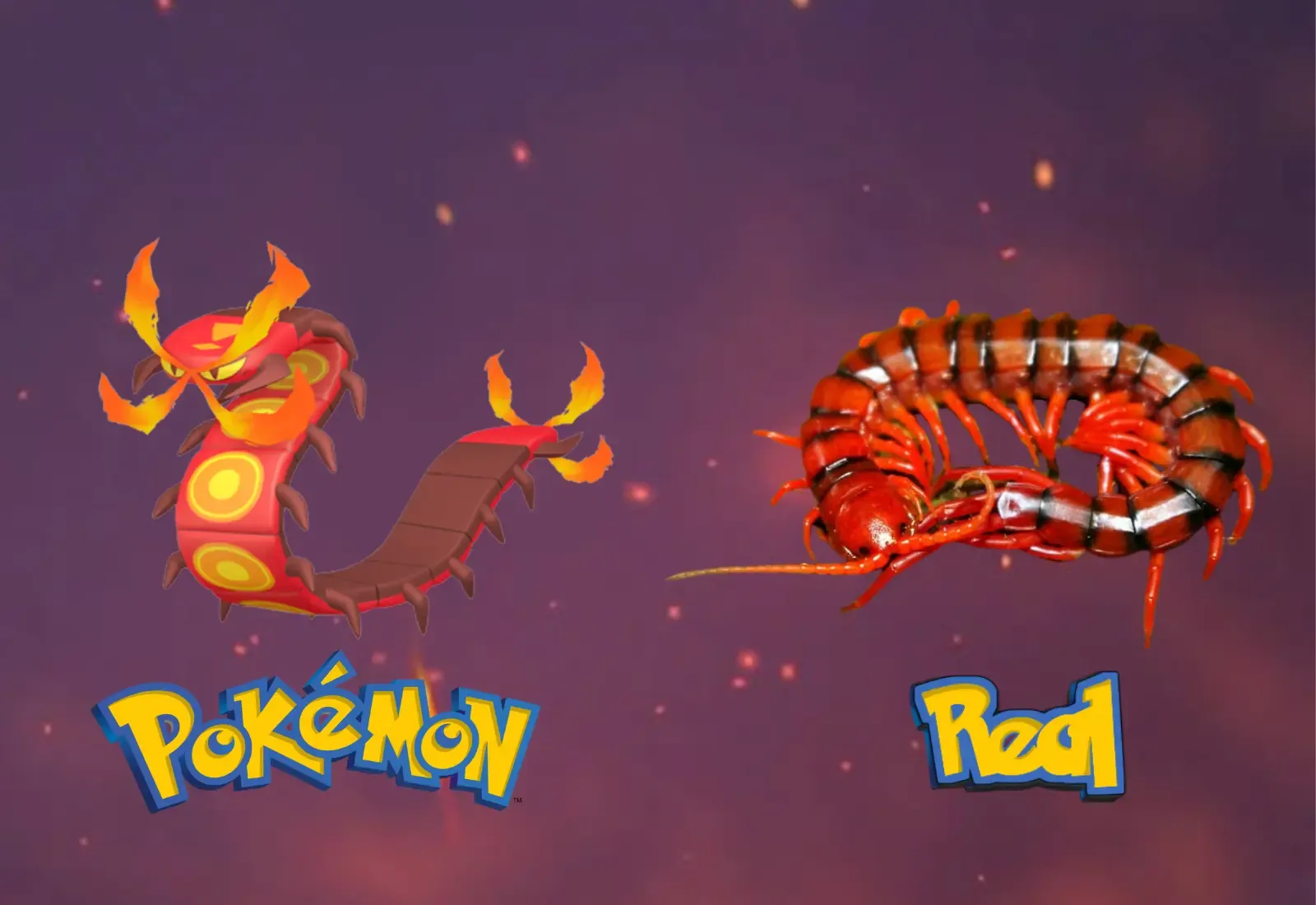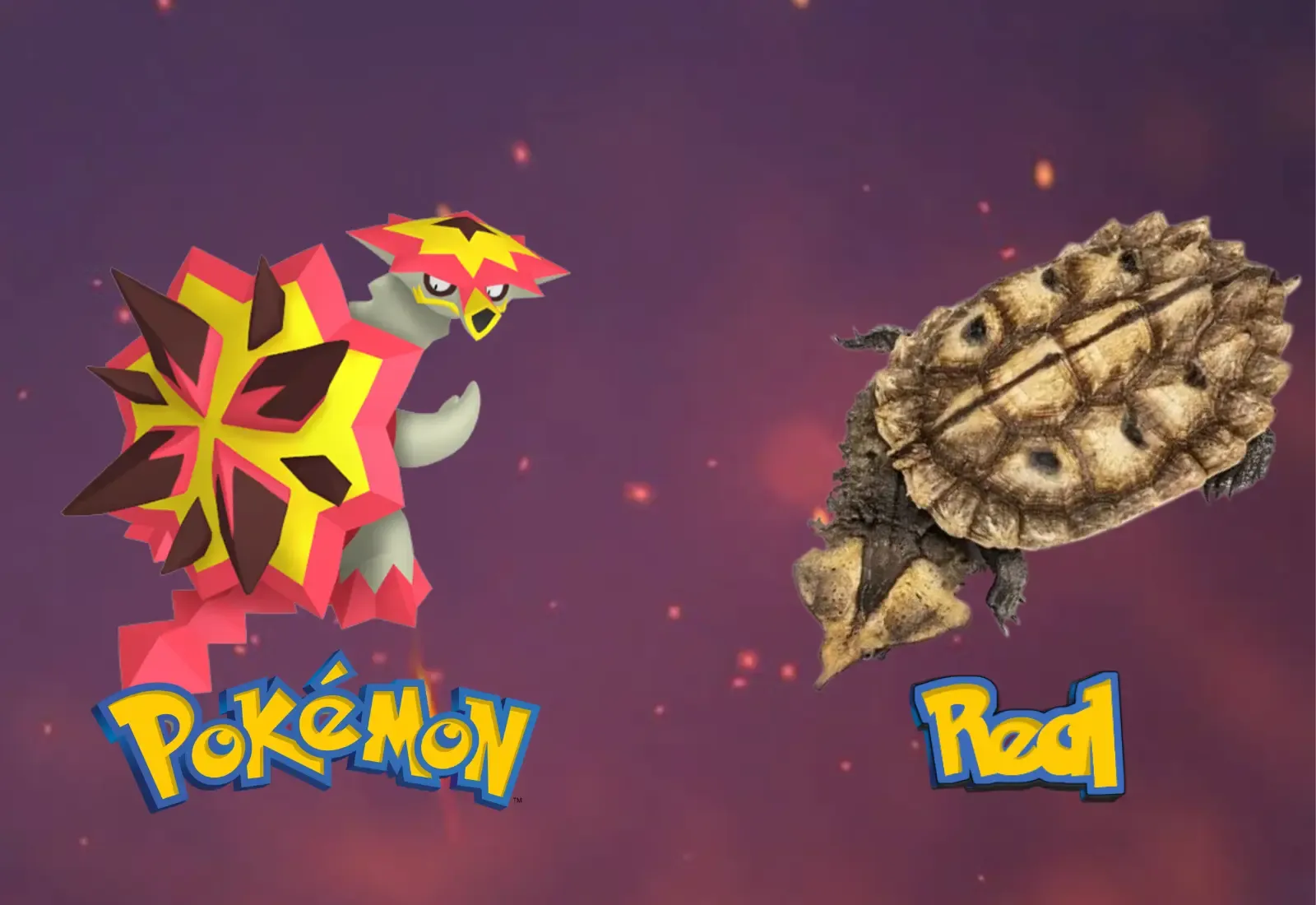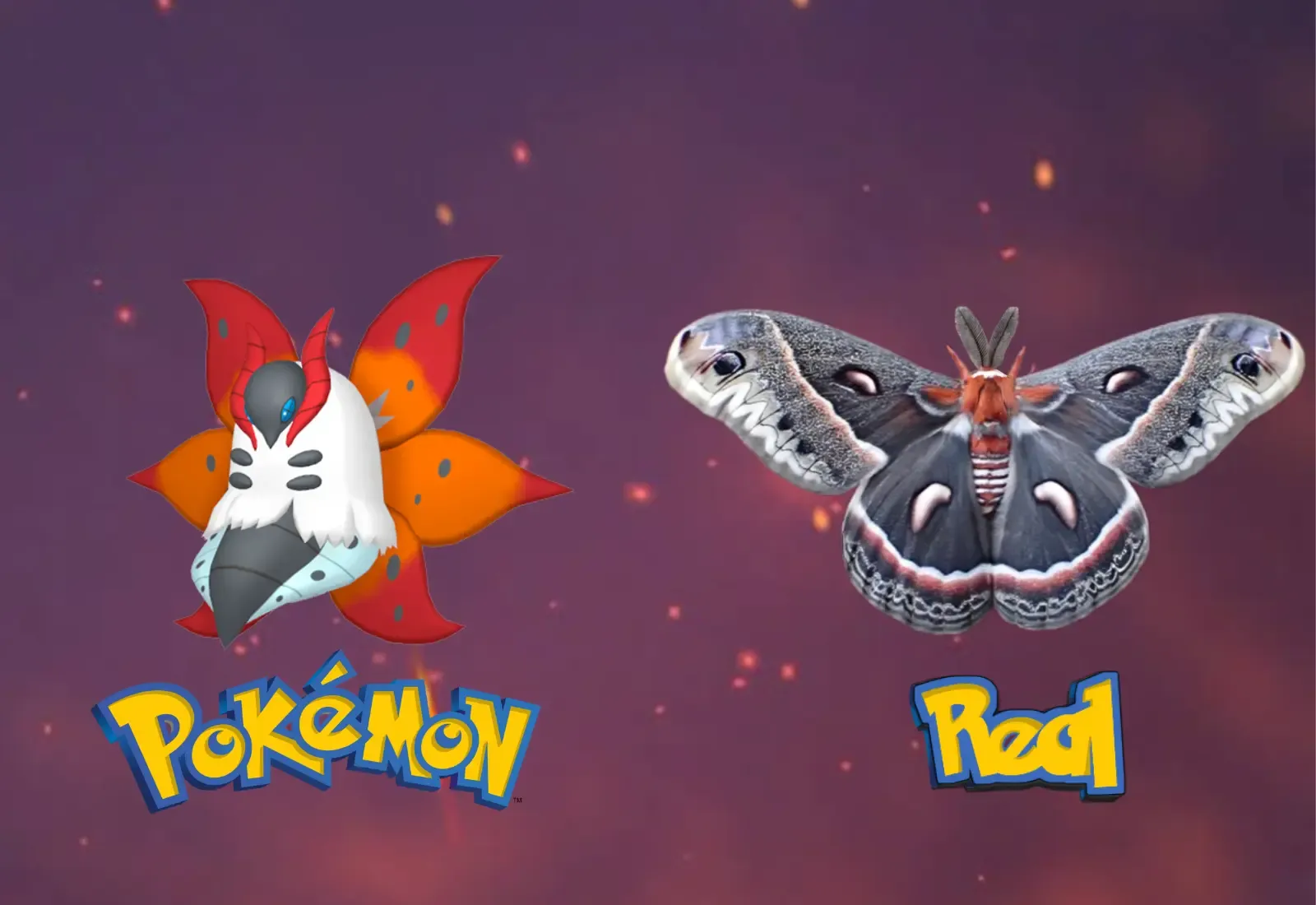Discover the Real-life Version of your Favourite Fire-type Pokémons here - Animalassic
Today, get ready to uncover the real-life counterparts of your favorite fire-type Pokémon, exploring their habitats, behaviors, and unique adaptations that make them truly extraordinary.
Table of Contents
Charmander, being both a Salamander and a Fire type simultaneously, could be a reference to the fact that throughout earlier times by various cultures, salamander has been believed to have mythical and fire related powers. In European heraldry, salamanders are often depicted as lizards or dragons engulfed in roaring fire.
Cyndaquil, the adorable Fire-type Pokémon, indeed draws inspiration from the echidna, a spiky mammal native to Australia and New Guinea. The connection between Cyndaquil's design and the echidna can be observed in its appearance and behavior.
IFrame with Image and Text
The Spiny Orb Weaver Spider, also known as the Star Spider, belongs to a unique species of orb weaver spiders. It is renowned for its stunning and vividly colored hard shell, which is adorned with six spines (three on each side). This distinctive appearance gives it a resemblance similar to the Torch Pokémon, Larvesta.
The design of Volcarona closely mirrors that of the cecropia moth, particularly evident in its wings and coloration. Volcarona's wings share a resemblance to the cecropia moth's wings, and its color scheme also bears a strong resemblance to that of the cecropia moth.
Fennekin, the fox Pokémon, is inspired by the real-life Fennec fox, and this influence is most evident in its appearance. Just like the Fennec fox, Fennekin possesses large, upright ears that give it a charming and distinctive look. These ears are not just adorable but also serve a practical purpose in the Pokémon world. In a similar fashion, how the Fennec fox relies on its prominent ears to disperse heat and stay cool in the scorching desert, Fennekin's also use thier ears to disperse heat but does so to intimidate it opponents.
Salandit, aka the toxic lizard Pokémon, draws its inspiration from the intriguing world of reptiles. Its design is primarily based on salamanders, particularly the species known for their toxicity. Salandit's striking appearance mirrors that of the Japanese fire belly newt, as both share vibrant coloration that catches the eye.This choice of color serves as a visual warning to potential predators, indicating the presence of potent toxins within Salandit's body. Legends surrounding salamanders, often associated with fire and poisons, further contribute to the mystique surrounding Salandit's design.
A fiery-looking slug that lives on a volcanic mountain, this isn't something that's impossible to find in the real world.
| Table of Contents | |
|---|---|
| 1. | Charmander |
| 2. | Centiskorch |
| 3. | Turtonator |
| 4. | Cyndaquil |
| 5. | Larvesta |
| 6. | Volcarona |
| 7. | Fennekin |
| 8. | Salandit |
| 9. | Oricorio |
| 10. | Slugma |
| 11. | Magcargo |
| 12. | Honourable mentions |
Salamander
Charmander, being both a Salamander and a Fire type simultaneously, could be a reference to the fact that throughout earlier times by various cultures, salamander has been believed to have mythical and fire related powers. In European heraldry, salamanders are often depicted as lizards or dragons engulfed in roaring fire.
The milky secretion produced by a frightened salamander, which moistens its skin, was believed to have fire resistant properties, which according to some authors allowed the salamanders to endure intense heat and even extinguish fires.
Leonardo da Vinci (1452–1519) wrote about the salamander: "This creature lacks digestive organs, sustaining itself solely from the fire, where it consistently renews its scaly skin. The salamander, renewing its scaly skin in the fire,—for virtue."
Among these, the most prominent legend regarding the salamander was that it was believed they were born from fire.This connection probably originates from a behavior common to many species of salamander, such as fire salamanders: hibernating in and under rotting logs. When wood was brought indoors and put on the fire, the creatures "mysteriously" appeared from the flames. Awakened abruptly from hibernation or sleep, the salamander's natural reaction of making a quick escape from the fire gave people the mistaken appearance that they were born from the fire.
The 16th-century Italian artist Benvenuto Cellini (1500–1571) famously recalled witnessing such incidence as a child in his autobiography.
These centipedes are fast and aggressive predators which can reach over 20cm in length and can consume prey as large as a mouse. Like other centipedes, thier first pair of legs are modified to deliver a painful venom that is effective both in subduing prey and in defense.
Both the Malaysian cherry red centipede and Centiskorch have bright red coloration, which results from the pigment in their exoskeletons. This serves as a warning to potential predators that they are venomous and dangerous. Bright colors in nature typically signal that a creature is poisonous or venomous, causing predators to avoid them.
Furthermore, the long, segmented bodies of both creatures allow them to move quickly and efficiently, making them effective predators. The fiery mane and tail of Centiskorch are similar to the Malaysian cherry red centipede's antennae, which are long and thin and resemble flames.
Mata Mata
The 'Explosive Shell Pokémon' draws inspiration from the remarkable Matamata turtle, an intriguing South American freshwater reptile that bears a striking resemblance to the Turtonator. However, unlike its volcanic-dwelling counterpart, the Matamata turtle does not inhabit areas in proximity to volcanoes, nor does it possess a penchant for consuming sulfur. Instead, this unique creature showcases its own distinct traits, opting to reside in serene habitats such as slow-moving streams, marshes, and swamps.
Nonetheless, one should not underestimate the Matamata turtle simply because, unlike its Pokémon counterpart, it doesn't dwell in a harsh volcanic environment or feed on sulfur-rich volcanic materials. In fact, this marvelous species boasts a captivating ability. When hunting, the Matamata turtle employs a captivating technique, thrusting its head forward and expanding its large mouth to its utmost limit. This remarkable maneuver creates a notable low-pressure vacuum, which acts as a forceful suction capable of drawing unsuspecting prey into its cavernous maw. This fascinating phenomenon is aptly termed "suction feeding."
Echidna
Cyndaquil, the adorable Fire-type Pokémon, indeed draws inspiration from the echidna, a spiky mammal native to Australia and New Guinea. The connection between Cyndaquil's design and the echidna can be observed in its appearance and behavior.
Firstly, let's talk about the physical design of Cyndaquil. The most apparent feature is the row of quills running down its back. These quills resemble the sharp spines or spikes that cover an echidna's body. In the case of Cyndaquil, the quills are a representation of the fire it produces on its back. The fire on Cyndaquil's back not only serves as a unique characteristic but also relates to the fiery nature of its Fire-type abilities.
Just like how an echidna can curl up into a ball, Cyndaquil also has the ability to curl itself into a tight ball when it feels threatened or scared. When it does this, the fire on its back flares up as a defensive mechanism, warning potential predators to stay away. This behavior is similar to how an echidna reacts when it feels threatened. By rolling into a ball and presenting its spiky exterior, the echidna defends itself against predators.
In terms of behavior, both Cyndaquil and the echidna display some similarities. Cyndaquil tends to be timid and cautious, often curling up or hiding when it encounters something new or intimidating. Similarly, the echidna is known for being a solitary and somewhat shy animal. It tends to avoid confrontation with other creatures and prefers to keep to itself.
×
Note: The following advertisement may contain Amazon affiliate links.
Advertisement
Spiny Orb Weaver
The Spiny Orb Weaver Spider, also known as the Star Spider, belongs to a unique species of orb weaver spiders. It is renowned for its stunning and vividly colored hard shell, which is adorned with six spines (three on each side). This distinctive appearance gives it a resemblance similar to the Torch Pokémon, Larvesta.
The spider's scientific name, Gasteracantha, originates from two Latin words: "gaster," meaning 'abdomen,' and "acantha," meaning 'thorn.' This name aptly describes the spiky protrusions on its abdomen.
This captivating species of spider is found in various regions across the globe, particularly in tropical and subtropical areas, as well as the Americas. Notably, there is a marked difference between males and females, a phenomenon known as sexual dimorphism. Male spiders lack the vibrant colors and spines that their female counterparts possess, and they are generally smaller in size.
Cecropia Moth
The design of Volcarona closely mirrors that of the cecropia moth, particularly evident in its wings and coloration. Volcarona's wings share a resemblance to the cecropia moth's wings, and its color scheme also bears a strong resemblance to that of the cecropia moth.
Speaking of the cecropia moth, this fascinating species was first described by Carl Linnaeus in 1758. As the largest native moth in North America, it boasts an average wingspan of five to seven inches (13 to 18 centimeters), and can be spotted across the continent.
Cecropia moths exhibit sexual dimorphism, which means there are distinct differences between males and females. Female cecropia moths tend to have a larger wingspan, while males possess larger antennae designed to detect pheromones, which are chemical signals used for communication.
Fennec Fox
Fennekin, the fox Pokémon, is inspired by the real-life Fennec fox, and this influence is most evident in its appearance. Just like the Fennec fox, Fennekin possesses large, upright ears that give it a charming and distinctive look. These ears are not just adorable but also serve a practical purpose in the Pokémon world. In a similar fashion, how the Fennec fox relies on its prominent ears to disperse heat and stay cool in the scorching desert, Fennekin's also use thier ears to disperse heat but does so to intimidate it opponents.
Alonside the large ears, fennec foxes have other clever adaptations which help them to survive in the harsh environment of deserts such as the pads of its paws are covered with dense fur, which facilitates walking on hot, sandy soilsand-colored and thier sand-colored fur which acts as insulation, keeping the fox warm in cold desert nights and cool during the scorching daytime. These adaptations of the fox perfectly complements Fennekin's Fire-typing, as Fire-type Pokémon are naturally well-suited to thrive in harsh and scorching environments, often inhabiting desert regions.
Japanese Fire-Belly Newt
Salandit, aka the toxic lizard Pokémon, draws its inspiration from the intriguing world of reptiles. Its design is primarily based on salamanders, particularly the species known for their toxicity. Salandit's striking appearance mirrors that of the Japanese fire belly newt, as both share vibrant coloration that catches the eye.This choice of color serves as a visual warning to potential predators, indicating the presence of potent toxins within Salandit's body. Legends surrounding salamanders, often associated with fire and poisons, further contribute to the mystique surrounding Salandit's design.
In addition to its salamander influences, Salandit also exhibits characteristics reminiscent of lizards. Its sleek and slender body, coupled with its agile movements, allude to its reptilian nature. This Pokémon's ability to traverse various terrains with ease is reminiscent of lizards' natural agility. Moreover, the term "bandit" serves as an apt descriptor for Salandit, suggesting its cunning and stealthy nature. Its design incorporates subtle details, such as the markings around its eyes resembling a mask, enhancing the illusion of a mischievous and elusive creature. These combined attributes make Salandit a visually captivating Pokémon, evoking both danger and intrigue.
Hawaiian Honeycreeper
Oricorios, the Pokémon renowned for its dancing abilities, draws inspiration from Hawaiian honeycreepers, commonly known as passerines. These honeycreepers, a group of songbirds that arrived in Hawaii millions of years ago, underwent evolutionary changes leading to the emergence of various species exhibiting differences not only in their plumage colors but also in their dietary preferences.
Unlike Oricorios, honeycreepers are not primarily known for their proficiency in dance forms. Instead, researchers have noted that a significant majority of these birds possess remarkable singing capabilities.
Furthermore, scientists have made intriguing observations regarding the plumage of nearly all species of Hawaiian honeycreepers. They have described the plumage as possessing a distinctive scent, often likened to the aroma of aged canvas tents, suggesting that either the honeycreepers emit a strong odor or that the researchers had the opportunity to examine and sniff every individual species in detail.
Mt.Kaputar Slug
A fiery-looking slug that lives on a volcanic mountain, this isn't something that's impossible to find in the real world.
Meet the Mount Kaputar pink slug, a species of giant air-breathing land slug native to the extinct volcano in Australia called Mount Kaputar. One of the most distinctive features of these slugs is their eye-catching super-hot pink color appearance, which is quite similar to Slugma's bright and fiery appearance. The reason for their bright color is still unknown, but it has been theorized that their color helps them blend in with the fallen leaves, presumably for camouflage among the snow gum trees during the autumn season on the forest floor.
Unlike Slugma, the Mount Kaputar pink slugs actually prefer cool, wet, and misty mornings. These slugs can be found hiding in the plant litter at the base of trees during the day, seeking refuge from the moisture. At night, the Mount Kaputar pink slugs emerge from their hiding spots and climb up the trees to feast on algae and mosses growing on the tree trunks.
Volcano Snail
The scaly foot snail, or the volcano snail, bears a great resemblance to the magma pokemon, magcargo which goes beyond just sharing similar body colors and being a gastropod.
Similar to the magcargo which resides in the harsh volcanic regions, the scaly foot snails are endemic to the deep-sea hydrothermal vents of the Indian Ocean about 2,780 meters deep, where temperatures can reach up to 700 degrees Fahrenheit. The snail's body has a tough, scaly covering on its foot that shields it from extreme temperatures and high pressure in its deep-sea habitat.
Similar to magcargo, the scaly foot snail also has a similar body coloration. However, unlike magcargo, which has a shell made of solidified magma, this remarkable mollusk boasts a shell composed of iron sulfides. This shell provides protection against predators and helps the snail withstand the challenging conditions of its habitat.
Like thier shells, scaly foot snails also have an very intriguing diet. These snail relies on bacteria for nourishment that live within its tissues to convert chemicals from the hydrothermal vents into nutrients. This unique adaptation allows it to survive in a habitat with limited food sources.
Honourable mentions
Giant Anteater
Bactrian Camel
Styracosaurus
Telescope eyed Goldfish
Don't forget to comment down your favorite Fire type pokémon.
















.png)








.webp)
.webp)

AWESOME
ReplyDelete